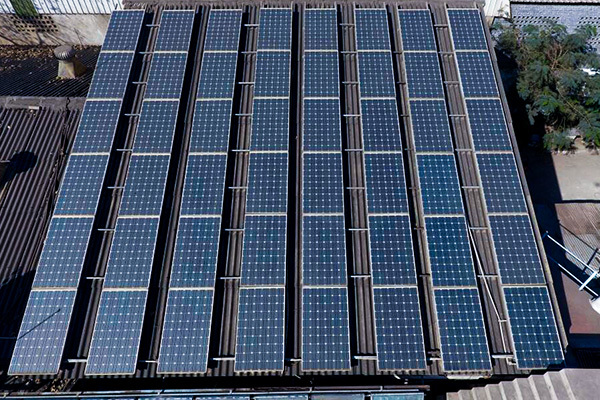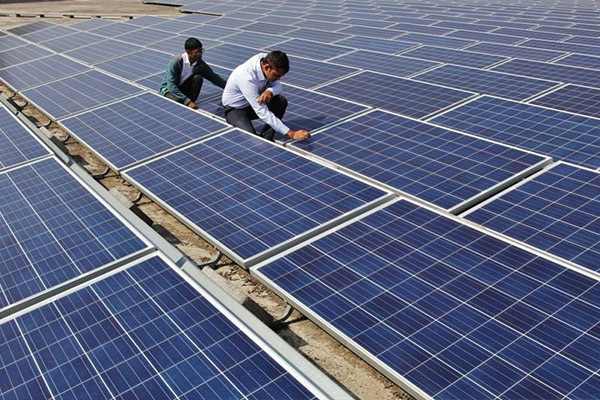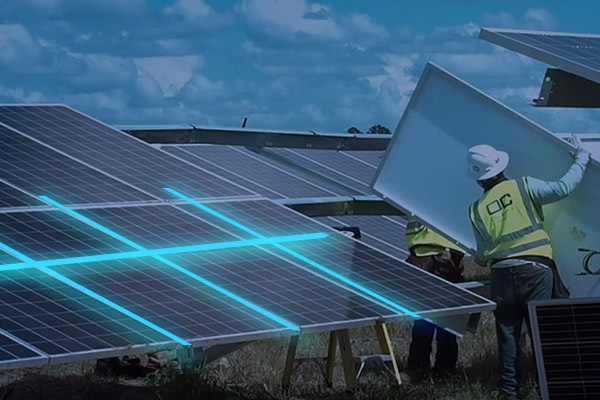With the rise of rooftop solar in the commercial sector around the world, a growing number of potential users want to know how to estimate the capacity they’ll need for their rooftop solar power plant.
Of course, the amount of rooftop solar capacity available will vary greatly depending on the market segment. But the available roof or ground capacity is usually KWp of the solar system and requires around 7 to 10 sq. mtr of shadow free area. Developed countries, with significantly higher per capita electricity usage than developing countries, will require large capacity from their rooftop solar panels. Even within a single country, rooftop solar capacity varies greatly from region to region, sector to sector, and so on.
Criterions to Select the Capacity of your Rooftop
1. Scope of the Project
To build a plant that meets your demands, you must first define what you want to achieve with your rooftop solar PV installation. Among the various types of requirements we face in our work are the following:
- Supports all of your electrical needs during the day
- Lighting loads are supported.
- During power outages, it keeps important loads running.
- Reduces the use of diesel
- Provides power for use at night.
2. Calculating the Solar Energy Available
The amount of solar energy accessible to you is determined by how much sunlight falls on a solar panel each day. This is measured in kilowatt-hours-per-square-meter-day (kWh/m2/day).
Solar installation varies greatly from one area to the next around the planet. We can create 4 kWh of power per day from a 1 kWp panel at crystalline panel efficiencies (which are the ones used in rooftop systems due to their higher efficiency).
This is an average figure that varies by region around the world.
3. Site Surveillance
The site survey determines whether the roof is suitable for solar installation. The following are some things to keep an eye out for:
- Availability of Space: 100 sq.ft. (approximately 10m2) of shade-free roof surface is required for 1 kW of panels.
- Orientation: For individuals in the northern hemisphere, a south-facing roof is excellent. A north-facing roof will be beneficial for those in the southern hemisphere (for example, Australia).
4. Calculating the Amount of Energy Needed
The amount of energy required is calculated based on the load to be supported. We know what equipment needs to be supported because we already identified the scope of the project in step 1. This equipment’s load can be estimated as follows:
Total energy requirement/day (Wh) = Wattage of appliance*No. of appliances*Hours of working
5. Size of the Solar System
- Dimensions of the system: This load consumes 1.8 kWh each day. Adding a 30% safety margin and assuming 4 kWh/m2/day insolation (this could be different for your region, so check with an installer), we get
System size = (Energy Requirement*1.3) /insolation level = 1.8*1.3/4 = 0.585 or 585 Wp.
- Dimensions of the panel
We compute the number of panels needed for this system size assuming 130 kWp panels at 12V.
No. of panels = System size/Panel Rating = 585/130 = 4.5 Therefore the system requires 5 panels of 130 Wp at 12V.
- Size of the inverter: When estimating the inverter size, we add a 45 percent safety margin.
India’s Commercial Sector will Increase Rooftop Solar Panel Deployment
According to a new report by the Institute for Energy Economics and Financial Analysis (IEEFA) and JMK Research, India might add 1,875 megawatts (MW) of new rooftop solar capacity across the commercial and industrial segments in 2021, a 47 percent increase over the previous year.
The government policies also state that maximum allowed for net metering is upto 500 KW in some states and/or some states allow only 80%or 50% of sanctioned load.
The C&I segment is investigating bifacial and large-wafer, high-wattage (400+/500+Wp) modules to reduce costs and increase production (kWh/m2), particularly for sites with limited space.
Some of these solutions, such as higher-wattage modules and bifacial modules, provide significant energy generation potential.
Higher-wattage panels in onsite solar installations in India boost plant generation by 1% while lowering balance-of-system (PV system components other than modules) costs by 1%, according to the paper. These advantages are especially important for sites with limited space.
Other fast-growing trends include battery storage, solar PV integration with EV charging stations, and building-integrated photovoltaics (BIPV).
Rooftop solar+battery energy storage systems (BESS) have a great possibility to replace diesel gensets, which account for 90 GW of capacity in India’s behind-the-meter applications.
EV adoption is already being boosted by government policy initiatives. Rooftop solar plus storage and electric vehicles is a cost-effective solution. In addition, BIPV gives a long-term potential for companies looking to create new commercial buildings and offices in India. Sometimes the client may not have a full budget in 1 year so he may plan in 2-3 phases to phase out the capital requirements.
Conclusion
Rooftop solar panels for energy production are becoming extremely prevalent since they are a renewable energy source that the government is aggressively encouraging, but they require careful planning and research before you decide to invest in a solar plant.
You can have a chance at a lifelong supply of free electricity with little recurrent expenses if you follow this criteria.
Novergy manufactures Very High Efficiency Crystalline Silicon solar panels with the highest quality raw materials and strong manufacturing procedures.
Their Half Cut Solar panels consistently provide more kWh energy (up to 60% or more) for a longer period of time with less degradation. The cell efficiency of these solar panels is greater than 21%. These solar panels are available in a variety of wattages (up to 350 watts) and cell layouts (72, 60, and 36 cells). Novery could be a channel partner with 14 plus years of experience and 25 year warranty as a plus.





